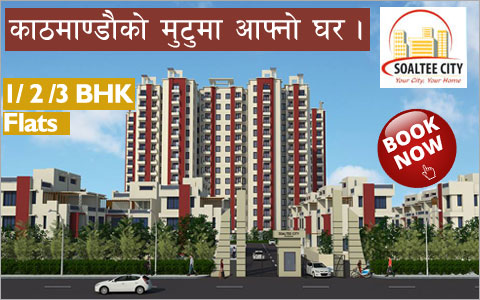National News
Kathmandu: Excited by the impressive collection of rental tax in the first six months of the fiscal year, the government wants to make it more systematic to boost revenue.
According to the Inland Revenue Department (IRD), rental tax collection reached Rs 770 million against the target of Rs 650 million. The annual target stands at Rs 1.35 billion.
IRD Director General Tankamani Sharma said that the department was working to collect rental tax as per the changed rental system. “We plan to categorize rental tax into three sections—house tax or non-professional tax, professional rental tax or commercial rental tax and residential apartment tax,” said Sharma.
He added that the IRD could also fix the minimum tax rate as per the different categories of rental tax. Government officials believe that there is a huge scope for higher tax collection from the rental system with an improved system in place.
According to the IRD, the commercial section is generally in the tax net. “However, low rental tax collection reflects they are not paying the proper amount,” said Sharma. According to him, payment of rental tax by the government and public sector has been honest, while collection from the private sector has been less than expected.
The Inland Revenue Office (IRD) is preparing to launch a campaign to bring high-income earning groups under the tax net by making it mandatory for them to obtain permanent account number (PAN) and register with value added tax (VAT).
The IRD’s move comes in response to complaints that a large number of high-income groups including professionals have not registered with PAN and VAT. “We will begin the campaign shortly after conducting a study on whether high earners including lawyers, medical doctors, consultants, auditors, stock brokers, engineers, professors and developers and contractors have registered with PAN or VAT,” said Sharma.
He added that the IRD was also planning to launch a campaign to study tax compliance by educational institutions, health centres and party palaces, among others.
source:The Kathmandu Post, 31 Jan 2012
- 9th Nepal Buildcon International Expo 2024
- Real Estate Expo 2023
- NRB raises housing loan limit to encourage home constructions
- Nepal Rastra Bank (NRB) Monetary Policy 2080-2081
- New Price of Land in Kathmandu Metropolitan City, Nepal
- Capital Gains Tax Rate on Real Estate Transactions in Nepal 2080-81 ( 2023/24 )
- Kathmandu metropolis implements free parking policy for commercial buildings and hospitals

![[X]](https://www.housingnepal.com/images/popup-close-button.png)














































































































































































































































































































































































 Facebook
Facebook
 Delicious
Delicious
 Digg
Digg
 Reddit
Reddit
 Stumble Upon
Stumble Upon









